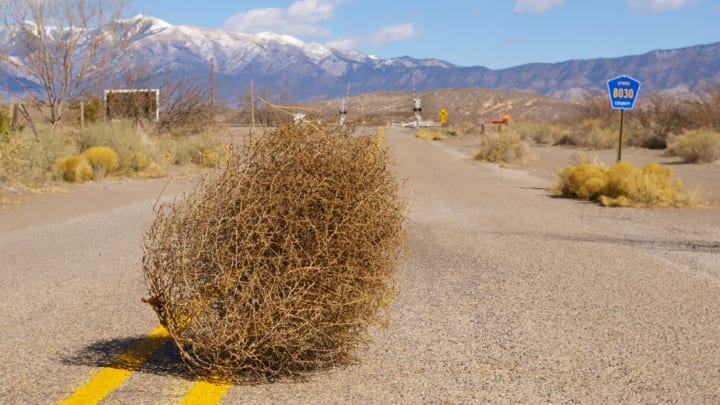While most plants benefit from a sedentary lifestyle, a single tumbleweed can roll for miles across open terrain. In the video below, The Kid Should See This explains what makes these unusual weeds the lone wanderers of the West.
Think of a tumbleweed and you'll likely picture a plant that's already dead. The live version of a tumbleweed is called a Russian thistle. Like many other plants, it flowers and dies over the course of a season, but instead of relying on animals to disperse its seeds, it breaks off from its roots and plants the next generation itself. The wind carries the dried-out bush across barren landscapes where new seedlings can flourish without competition from grasses and other plants. As the weed bounces along, tiny seeds packed with coiled-up embryos sprinkle out from between its thorny leaves.
Though tumbleweeds may be an iconic symbol of the Wild West, they originated in Eastern Europe. They likely arrived as stowaways in shipments of flax seeds brought to the U.S. in the 19th century.
Some people living out west today aren't too fond of the European import. The California town of Victorville was recently invaded by tumbleweeds when wind gusts approaching 50 mph blew in from the Mojave Desert. In some cases the tumbleweeds clustered on doorsteps, trapping residents inside their homes.
[h/t The Kid Should See This]
